#grosvenor museum
Text
Under Cover (Museum and Market)
Thursday grey and damp, we sought covered spaces to avoid the worst showers. From a rainy Eastgate Street, we sheltered in The Grosvenor Shopping Centre to be diverted by TK Maxx and Castle Fine Art’s window, featuring mediocre efforts by Bob Dylan and Billy Connolly. Emerging on Bridge Street rows, we kept dry until reaching the steps at the end and crossed to Grosvenor Street.
We paused to…

View On WordPress
#art deco#artefacts#bar#barracks#bench#boutique#brickwork#Bridge Street#Bunce Street#Change in Fashion#Cheshire#Chester#Chester Rows#Chester Tandoori#chimney#coffee#Eastgate#Eastgate Rows#exhibition#fashion#food court#Georgian#Godstall Lane#Grosvenor museum#Grosvenor Place#Grosvenor Shopping Centre#hipsters#house#lane#Lisa Jayne Smith
0 notes
Text
1. Castle by Moonlight
I missed my posting on the first of November – I forgot! Here it is a day late.
My four year old boy is at the delightful age where everything he sees is fascinating.
City walls of Chester, for example. Why are they there? Who used to walk on them? Did they used to walk on walls in the olden days, and today we walk on paths? Why did they walk on walls in the olden days? What are enemies?
Mama,…
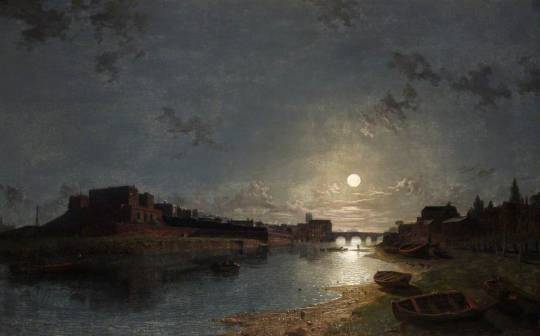
View On WordPress
#am writing#blogging#castle#castle by moonlight#cheshire#chester#chester castle#childhood#childlike innocene#children#city walls#Daily Writing Challenge#family#grosvenor museum#henry pether#life#moonlight#nanopoblano#nanopoblano 2023#NanoPoblano2023#nanowrimo#nanowrimo 2023#November#paintings#personal#thoughts#united kingdom#writing#writing month
0 notes
Text
MFABoston's Romance With NFTs: Not Fiscally Tangible, Maybe?
MFABoston’s Romance With NFTs: Not Fiscally Tangible, Maybe?
The other day the hardworking staff received this email from Boston’s Museum of Fine Arts.
Not to get technical about it, but we don’t have a digital collection of NFTs, mostly because they’re the pet rocks of the art world.
But we’re getting ahead of ourselves.
Last year the Boston Globe’s Malcolm Gay reported on the origins of the MFA’s NFT fling.
‘Someone had to move first’: MFA plans sale…

View On WordPress
#(Bit)coin flip#19th century French pastels#Bloomberg#Boston Globe#Brendor Grosvenor#British Museum#Businessweek#Diary of an art historian#Edgar Degas#Hokusai#J.M.W. Turner#laCollection#Malcolm Gay#Matt Levine#MFA NFT fling#MFABoston#Terry Sullivan#The Art Newspaper#vapor-art#Yahoo
3 notes
·
View notes
Text
Dear Seventeen Magazine, I am writing in response to your "Girl Talk" article from the July 1996 issue. In it, you ask for stories about the most embarrassing dinner mistakes the reader has made. I hope that the delay in responding is not inconvenient for you. I have been incarcerated for awhile, and was thus unable to reply quickly.
My story begins with my arrival at Grosvenor Manor. I had been invited there by the Governor himself, as part of his quarterly fundraising. Putatively, to the media, he said that it would be for the new art museum, but in reality, we were there to back his re-election campaign. In particular, the Governor was worried about his chances up against "Wildcat" Tom McCaffrey, who had been right on his heels, so-called "self-funded" by his dealership network.
Being "new money," it was likely that I would be bullied by the other rich folks, but my mother had always raised me to stand up for myself. That's part of why I had the money at all, being the last surviving member of my special forces unit. We had stolen a large quantity of gold, art, weapons, drugs, and exotic animal remains from a local warlord and decided, rather than to turn it over to NATO, to simply sit on it ourselves until the war was off.
Naturally, it was worth millions of dollars. I had lived reasonably well, but still well-off, ever since. I bought a base-model Jaguar from a demolition derby claimer lot, and purchased a house with stereo speakers inside it, but sadly that house would never get to play Chumbawamba's famed Tubthumping in my possession. The events of that fateful night would guarantee it.
Remember how I told you that my mother raised me? My upbringing was a little rough. One of the things I never learned was how to deal with a tablecloth. I had tucked it into the waistband of my trousers, in order to prevent my lap from inadvertently receiving any spilled lobster bisque.
Unfortunately, when I got up to go to the washroom, I completely forgot to un-tuck it from my waistband, and I pulled the entire tablecloth over on the Senator's wife, scalding her with boiling-hot clam chowder and, yes, even more lobster bisque (they served it by the gallon.) There were some heated words, and things escalated from there.
Thank you for reading my letter! I look forward to picking up the new issue of Seventeen from the news-stand wherever I am currently hiding from my parole officer.
P.S. Did Space Jam end up being good? A lot of the other guys in prison talked about it, but the warden refused to play it for us.
180 notes
·
View notes
Photo

Stained glass fragment, the Netherlands, ca. 1600-1699
This stained glass fragment, depicting a bee and a carnation, is from the collection of Grosvenor Thomas. It was combined into a larger composite panel of miscellaneous fragments by the V&A.
Victoria & Albert Museum
89 notes
·
View notes
Photo
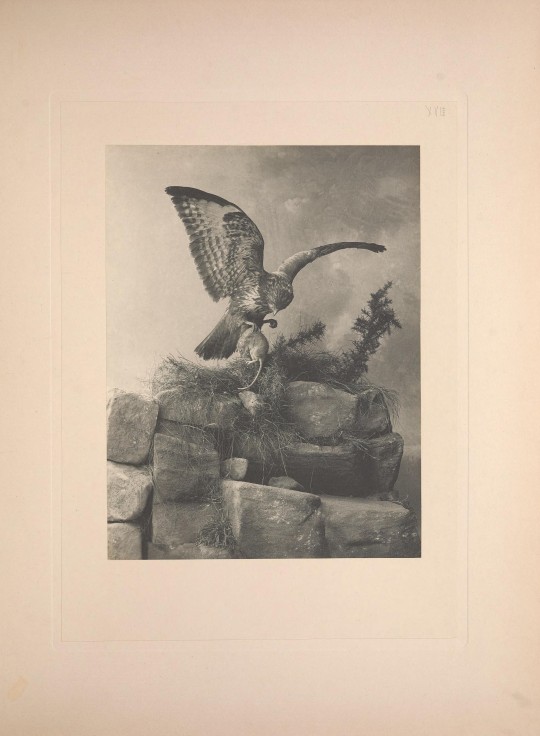
🦅 Twenty-five photographs Chester:[Grosvenor Museum, 1895]
12 notes
·
View notes
Photo
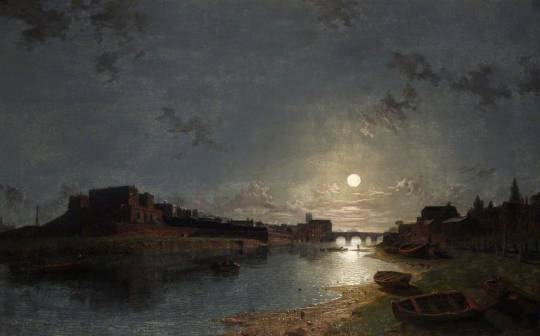
Chester Castle by Moonlight
Henry Pether (1800–1880)
Grosvenor Museum
148 notes
·
View notes
Photo

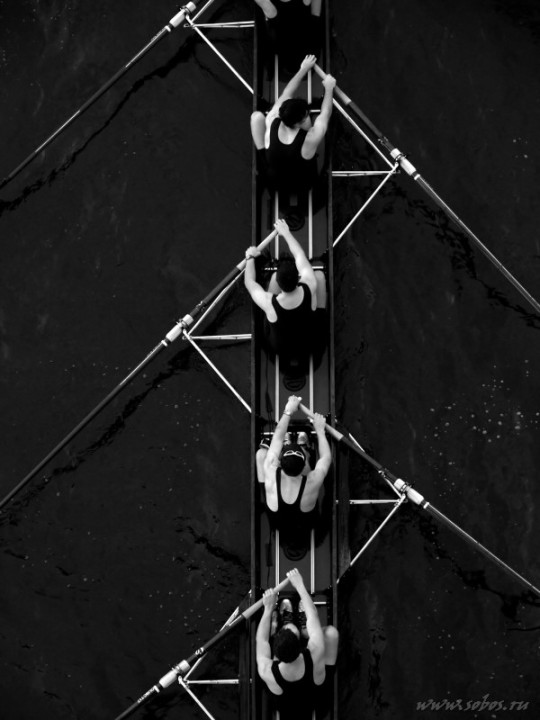
1 Cyril Power (1872-1951) UK The Eight reduction lino cut print (1930) 32.3×23.4cm
2 photographer unknown
economist.com
IT HAS become the custom nowadays,” wrote Claude Flight, a British artist, in 1926, “to go to a shop for the tools of one's trade.” Flight was scornful of shoppers and liked to make things for himself. He kept his own bees and championed the art of the linocut, believing that the use of cheap materials would help democratise art and bring it to the attention of the masses. For his own linocuts he insisted on “a sharp penknife—such a very rare thing among art students” and a gouge he fashioned by fitting a small wooden handle onto a rib he cut from an umbrella.
Hard to imagine health and safety regulations allowing children today to have such fun. But Flight, who was a friend to Henry Moore, Ben Nicholson and Barbara Hepworth, inspired many pupils at the Grosvenor School of Modern Art, where he taught, wrote and organised exhibitions on linocuts.
Among the most famous was Cyril Power, an extraordinarily creative printmaker, born in 1872, who soaked up Flight's enthusiasms and gave them new force. Power drew on many influences—of the German Expressionists (who invented linocutting before the first world war), the Italian Futurists, the Vorticist prints and paintings of Wyndham Lewis—and the enthusiasm for speed and movement that marked the work of so many artists of the period, from Natalya Goncharova to Marcel Duchamp.
While the work of the Germans, Italians, French and Russians has become very well known, the prints and linocuts made by Power and his fellow British artists have lingered in the shadows. An inspired little exhibition—the first major show of Modernist British prints in America, which began earlier this year at the Museum of Fine Arts in Boston and is now at the Metropolitan Museum in New York—will help change that. So too will a newly opened show at a private gallery in London that gathers together for the first time prints of all 46 of Power's linocuts. Some are for sale; others have been lent by museums and private collectors, of which the most important are two New Yorkers, Leslie and Johanna Garfield.
The first impression of the Power show is that he lived his life in reverse. Until he was almost 50 he followed in the professional footsteps of both his father and his grandfather and practised as an architect, making a name for himself also as the author of an erudite study entitled “English Medieval Architecture”. Then, as Philip Vann explains in an elegant essay that accompanies the show, he “embarked on a kind of Gauguin-esque adventure”, leaving his wife and four children to enrol in art school in the company of a 24-year-old artist, Sybil Andrews.
The early prints in the show were made by a middle-aged man and it shows. In black-and-white there is a bridge at Rickmansworth, a street corner in the sleepy Suffolk town of Lavenham. Then suddenly the movement of the windmill in “Elmers Mill, Woolpit” gives an indication of what is to come. Starting in 1930, when he was already 58, Power takes to speed as if he had taken personal charge of the Futurist manifesto, which C.R.W. Nevinson co-signed with an incendiary Italian, Filippo Marinetti, in 1914, with the words “Forward! HURRAH for motors! HURRAH for speed!…HURRAH for lightning!”
Power allows light, noise and speed into everything he sees. Using a series of easily recognised colours, particularly “Chinese orange”, “chrome orange”, “viridian” and “Chinese blue”, he created images of merry-go-rounds, rowers, acrobats, dancers, runners, hockey players and, of course—given that some of his influences were Italian—beautiful cars.
The most successful are those, like “The Eight”, in which the element of formal design is most visible. But Power's vision as an artist really comes to the fore in works containing a hint of menace. The bourgeois-assaulting spirit of Italian Futurism, Mr Vann explains, had fallen into the malign hands of Mussolini and was about to give way to Fascism, while Freud's and Jung's obsessions with the unconscious were increasingly helping to throw up visions of fears, hopes and dreams.
“Monsignor St Thomas” (1931, pictured at left) is a brilliant working of the murder in the cathedral of Thomas à Beckett, but it is technically skilful rather than edgy. The really potent, and most modern-looking, of Power's linocuts are those that lead the viewer right to the edge. These start with “Tennis” (1933, below), a magnificent rendering not just of the energy of the centre court, but of the physical and psychological effects of slicing and spinning—sport at its most gladiatorial.
As the 1930s move towards totalitarianism and then war, Power's work takes on a darker hue. The tube trains and the escalators of the London subway system provide ample opportunity for exploring man's addiction to the rat race. Two further works seem remarkably prescient. In 1934 Power made a linocut which he called “Exam Room”, full of hunched-up concentration and a complex set of figures that show, in turn, fear, nerves, gloating, dreaming—and one who is slyly distracting a neighbour. Watching over them is the overbearing timekeeper and the all-seeing eyes in the ceiling.
Similarly, “Air Raid”, which Power made in 1935 and which has been lent to this show by the RAF Museum in Hendon, is an extraordinarily filmic response to a period of history the artist had not yet even seen. It would be another five years before the start of the Battle of Britain would make such imagery routine. Cyril Power was not just an artist, he was a visionary
4 notes
·
View notes
Text
Scientific research supports the accuracy of Herodotus' report on mummification
"David Counsell
Proving Herodotus and Diodorus?
Headspace analysis of ‘eau de mummy’ using gas chromatography mass spectrometry
Abstract
Historical accounts of the mummification process from Herodotus (5th century BC) and Diodorus Siculus (1st century BC) report the use of a wide range of aromatic plant materials, including many common herbs and spices. Mummified remains consistently emit a musty odour, likely derived from residues of these materials. Using a sampling technique, novel in archaeology, the constituents of this odour were analysed using GCMS. The sample utilised was from a particularly pungent mummy from the Leicester Museum collection; Bes-en-mut, a priest in the temple of Min at Akhmim c. 700 BC. The results revealed the presence of a wide range of turpenoid and other compounds derived from a range of aromatic plants, including well known herbs and spices such as Cinnamon and Rosemary. The abundance of these compounds in nature make it difficult to identify in most cases exactly which plants were actually used in the embalming of Bes-en-mut, with one exception. The identification of juniperol, which is unique to the common juniper, Juniperus communis, confirms the use of juniper oil in the mummification process. Overall the results support the accuracy of the historical reports particularly that of Herodotus, whose authenticity has often been called into question."
David Counsell "Proving Herodotus and Diodorus? Headspace analysis of ‘eau de mummy’ using gas chromatography mass spectrometry", in Mummies, magic and medicine in ancient Egypt. Multidisciplinary essays for Rosalie David (edited by Campbell Price, Roger Forshaw, Andrew Chamberlain and Paul Nicholson with Robert Morkot and Joyce Tyldesley), Manchester University Press, 2016
David Counsell qualiied in medicine at Leicester in 1982 and became a consultant cardiothoracic anaesthetist at Blackpool in 1991. From 2001 he was a consultant in Wrexham and from 2010 to 2015 Chief of Staf in Anaesthetics, Pain and Critical Care at Nuield Health, The Grosvenor Hospital. He obtained the Certiicate in Egyptology at the University of Manchester in 1996 and was awarded a PhD for his research into drug and intoxicant use in ancient Egypt. He became an Honorary Research Associate at the KNH Centre for Biomedical Egyptology at Manchester University and has lectured, published papers and made television appearances relating to opium, the blue lotus, cocaine, nicotine and the death of Tutankhamun (source: https://www.academia.edu/26057393/Mummies_Magic_and_Medicine_in_Ancient_Egypt_Multidisciplinary_Essays_for_Rosalie_David.)
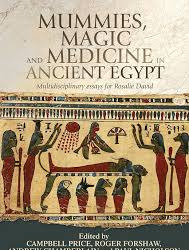
3 notes
·
View notes
Note
I forgot to ask these when I first saw them…
4, 7, 24, 43 (in reference to your online names ofc), 77 (/j), and 95!
4: What do you think about most?
... leon czolgosz probably ... nothing productive he is just on my mind. but MAYBE dorian gray surpasses him idk
7: What’s your strangest talent?
ummmmmm i can walk really fast👍 idrk
24: Do you have a collection of anything?
i think my antique/vintage books count as a collection... and maybe my dolls/figurines?
43: Do you have any nicknames?
no i don't believe so
77: How can I win your heart?
steal self-portrait with a sunflower from hugh grosvenor /j
95: You just got a free plane ticket to anywhere. You have to depart right now. Where are you gonna go?
i already answered this but i'll answer it once again with the interpretation of "if you could go on a free trip to anywhere, where would you go?" rather than "where would you most like to be sent without any sort of luggage (other than what you can quickly grab) and, in your case, no money?"
london england because it has museums and most people there speak english and signs &c. are in english so i wouldn't be confused... though there is a modern/contemporary art museum (tate modern) which is frightening
2 notes
·
View notes
Text
Listen to a recorded document of the conceptual exhibition 'Art by Telephone' at Chicago's Museum of Contemporary Art in 1969.
Transcription excerpt: Artist unknown.
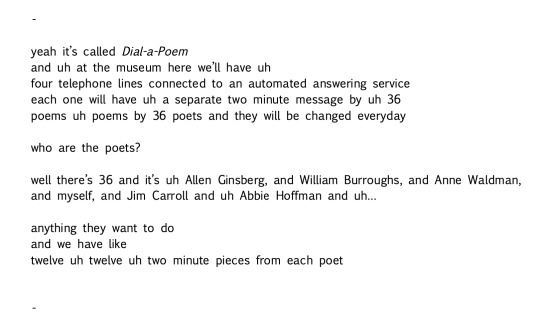
Inspired in part by Laszlo Moholy-Nagy's “telephone pictures” (for which the artist dictated his design for works over the phone to a fabricator, emphasizing the fact that an intellectual approach to the creation of art was not inferior to an emotional approach), Art by Telephonewas an extremely influential conceptually driven exhibition in the MCA's early history. Occurring at a time when the art world was moving away from minimalism and in a more conceptual direction, Art by Telephone asked artists from the United States and Europe to communicate their ideas for artworks over the telephone to MCA curator David H. Katzive. MCA staff then executed the works based on the artists' oral instructions, avoiding all blueprints and written plans. After six weeks, all of the works exhibited in Art by Telephonewere either destroyed or disposed of by the museum.
Some of the artists involved, such as Richard Hamilton and Wolf Vostell, approached the project with a more literal interpretation of the thematic. Vostell mailed a calendar of changing phone numbers from Germany. Visitors dialed the numbers to receive instructions for one-minute happenings. A Sol LeWitt wall drawing was produced with the help of assistants, and Robert Smithson constructed a varied version of his “non-site,” asking that a pile of cement be poured down a steep hill and then photographed for display in the galleries.
The exhibition included installations that relied heavily on audience participation, such as Arman's famous trashcans. The artist asked people to contribute their own waste to the enclosed Plexiglas area. Once it was filled to the brim, the work was considered complete.
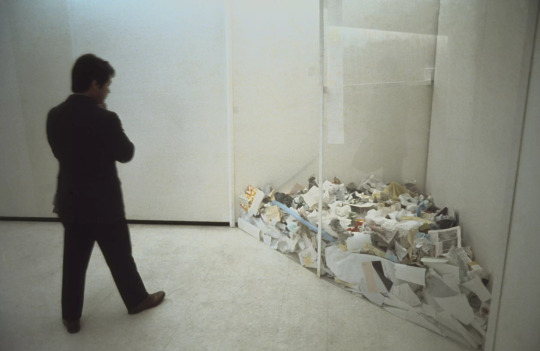
Others, such as William Wegman's Third Day, embraced natural occurrences. Third Dayconsisted of a trough, built in the shape of the letters spelling out “third day,” that was filled with water and covered with vermiculite. The water evaporated in three days, exposing the words engraved on the floor.
The exhibition was dedicated to Marcel Duchamp and John Cage, who declined to participate. However, most if not all artists who did accept the museum’s invitation, were influenced by one or both in some way, accepting the idea of process and experience over finished object.
Artists exhibited in Art by Telephone included: Siah Armajani, Arman, Richard Artschwager, John Baldessari, Iain Baxter, Mel Bochner, George Brecht, Jack Burnham, James Lee Byars, Robert H. Cumming, Francois Dallegret, Jan Dibbets, John Giorno, Robert Grosvenor, Hans Haacke, Richard Hamilton, Dick Higgins, Davi Det Hompson, Robert Huot, Alain Jacquet, Ed Keinholz, Joseph Kosuth, Les Levine, Sol LeWitt, Robert Morris, Bruce Nauman, Claes Oldenburg, Dennis Oppenheim, Richard Serra, Robert Smithson, Guenther Uecker, Stan VanDerBeek, Bernar Venet, Frank Lincoln Viner, Wolf Vostell, William Wegman, and William T. Wiley.
#artbytelephone#museumofcontemporaryartchicago#conceptualart#inspired by John cage#inspired by duchamp#experimental proccess#artist as Ikea leaflet#1969#secondary research#ubuweb
2 notes
·
View notes
Text
Explore Cheshire’s Rich History: Historical Sites and Landmarks
Nestled in the heart of England, Cheshire stands as a testament to the country’s rich cultural and industrial heritage. This enchanting county is a treasure trove of historical sites and landmarks that unveil its storied past, ranging from Roman amphitheaters to medieval estates and iconic industrial structures. Join us on a journey as we explore Cheshire’s rich history and delve deep into some of its most fascinating historic sites and heritage attractions.
Chester: A Walk Through Time
Start your journey with a visit to Chester, a city steeped in over 2000 years of captivating tales. Stroll along the oldest, longest, and most complete city walls in Britain, which offer a unique perspective on the city’s evolution. Chester’s Roman heritage comes alive through a Roman Tour, a visit to the Grosvenor Museum, and an exploration of the Roman Amphitheatre, the largest of its kind in Britain. The city’s charming black-and-white timbered buildings, including the renowned Rows, provide a picturesque backdrop that seamlessly blends the medieval with the modern.
Tatton Park: Where History Meets Elegance
For a dose of historic grandeur, Tatton Park stands out as an unrivaled attraction. The estate boasts a neo-classical mansion, a medieval Old Hall, and impeccably manicured gardens. As visitors wander through the grounds, they are transported through time, with evidence of human occupation dating back to 8,000 BC. Norton Priory, another gem for garden enthusiasts, invites exploration of 12th-century priory ruins amidst splendid gardens that chronicle centuries of human interaction with the land.
Anderton Boat Lift: Engineering Marvels on Display
For a unique experience, head to the Anderton Boat Lift, a marvel of 19th-century engineering designed by Edwin Clark. This structure lifts cargo boats an impressive 50 feet from the River Weaver to the Trent & Mersey Canal. Visitors can enjoy boat trips through the lift and along the scenic River Weaver, providing a firsthand look at this historic feat of engineering. Additionally, the National Waterways Museum at Ellesmere Port offers a captivating journey into the history of Britain’s waterways, complete with historic boats and picturesque settings.
Chester Cathedral: A Cultural Hub
Chester Cathedral, a multifaceted landmark, serves as a vibrant community of worship, an ancient abbey, an archaeological treasure, and a center of musical excellence. Its refectory cafe not only offers a delightful atmosphere but also provides an opportunity to indulge in a delicious traditional afternoon tea, making it a must-visit for those seeking a cultural and gastronomic experience.
Jodrell Bank Discovery Centre: Unveiling the Wonders of the Universe
For a departure from traditional historical sites, the Jodrell Bank Discovery Centre invites visitors to explore the wonders of the universe. Home to the iconic 76-meter Lovell Telescope, Jodrell Bank showcases the fascinating intersection of science and engineering. The center’s origin story, beginning in 1945 with Bernard Lovell’s cosmic ray observations, unfolds against the backdrop of the Cheshire countryside, making it a unique and educational destination for families and science enthusiasts alike.
Beeston Castle: A Fortress in the Sky
Perched majestically atop a rocky crag overlooking the Cheshire Plain, Beeston Castle is a medieval marvel that boasts not only a dramatic setting but also a rich history dating back 4,000 years. The castle’s strategic position affords visitors spectacular panoramic views, stretching from the Pennines to the Welsh mountains on clear days. As you approach, a replica Bronze Age roundhouse welcomes you, offering a glimpse into ancient civilizations that once occupied this commanding site. The castle’s 40-acre woodland park provides a serene escape, inviting visitors to wander amidst nature and reflect on the centuries of stories embedded in the landscape.
Nantwich: A Step Back in Time
Venture into the enchanting market town of Nantwich, where Tudor architecture and cobbled streets create a picturesque scene that transports you to a different era. Stroll through the historic timber-framed buildings that line the streets, each one whispering tales of centuries gone by. The crown jewel of Nantwich is St. Mary’s Church, with its medieval origins and timeless beauty, standing as a testament to the town’s enduring history. The town is a living canvas of the past, inviting visitors to meander through its streets and absorb the charm that permeates every corner.
Cheshire Cheese: A Renowned Delight
No exploration of Cheshire’s rich history is complete without savoring its local delicacies. Cheshire cheese, renowned for its dense, crumbly texture and mild taste, takes center stage. Whether enjoyed in its natural white state or dyed with a red vegetable dye, Cheshire cheese is a flavorful embodiment of the region’s culinary heritage.
Cheshire’s historical sites and landmarks offer a captivating journey through time, weaving together tales of Roman legacies, medieval grandeur, industrial prowess, and scientific exploration. So, whether you’re a history enthusiast, a nature lover, or a culinary connoisseur, Cheshire has something extraordinary to offer.
Pinewood Hotel, strategically located in Handforth, serves as your gateway to this historical wonderland. Immerse yourself in the stories of the past, explore the architectural marvels, and create lasting memories against the backdrop of Cheshire’s timeless beauty. Book your stay at Pinewood Hotel, and let the exploration of Cheshire’s history unfold before your eyes.
Book direct for the lowest rates: www.pinewood-hotel.co.uk
#luxury hotel#hotels and resorts#accomodation#hotel#hotellife#4 star hotel in manchester#4 star hotel in pinewood
0 notes
Text
Review: The Mummy (1932)
The Mummy (1932)
Approved by the Production Code Administration of the Motion Picture Producers & Distributors of America

<Originally posted at https://kevinsreviewcatalogue.blogspot.com/2023/10/review-mummy-1932.html>
Score: 4 out of 5
The second classic Universal monster movie I was able to check out at Cinema Salem this October, The Mummy is one of the few such films where the classic 1930s version isn't the definitive example these days. In 1999, Universal remade it as an Indiana Jones-style action/adventure flick starring Brendan Fraser and Rachel Weisz, and if I'm being perfectly honest, having now seen both movies I kinda prefer the '90s version. The original still has a lot going for it even more than ninety years later, but the remake's pulpy, two-fisted throwback style is just nostalgic for me in ways that hit my sweet spot. That said, I will argue that this was a better and more self-assured film than The Invisible Man, having a monster and effects just as memorable but also remembering to keep a consistent tone and, more importantly, have a compelling non-villainous character for me to root for in the form of its female lead. It is, shall we say, of its time in its depiction of Egypt and its people, but there's a reason why Boris Karloff is a horror legend, and here, he made Imhotep into a multilayered villain and a compelling presence on screen -- rather appropriately given how he's presented here as ominously seductive. At the very least, both it and the Fraser version are a damn sight better than the 2017 Tom Cruise version.
The film starts in 1921 with a tale as old as the first exhibit at the British Museum of ancient Egyptian artifacts, as an archaeological expedition in Egypt led by Sir Joseph Whemple discovers the tomb of a man named Imhotep. Studying his remains and his final resting place, they find that a) he was buried alive, and b) a separate casket was buried with him with a curse inscribed on it threatening doom to whoever opened it. Sure enough, Joseph's assistant opens that casket, reads from the scroll inside, and proceeds to go mad at the sight of Imhotep's mummified body getting up and walking out of the tomb. Fast-forward to the present day of 1932, and Joseph's son Frank is now following in his father's footsteps. A mysterious Egyptian historian named Ardeth Bey offers to assist Frank and his team in locating another tomb, that of the princess Ankh-es-en-amun. It doesn't take much for either the viewer or the characters to figure out who "Ardeth Bey" really is, especially once he starts taking an interest in Helen Grosvenor, a half-Egyptian woman and Frank's lover who bears a striking resemblance to the ancient drawings of Ankh-es-en-amun.
Let's get one thing out of the way right now. Lots of modern retellings of classic monster stories, from Interview with the Vampire to this film's own 2017 remake, often throw in the twist of making their monsters handsome, even sexy, as a way to lend them a dark edge of sorts. In the case of the Mummy, however, doing so is fairly redundant, because Karloff's Imhotep is already the "sexy mummy", if not in appearance than certainly in personality. He is threatening and creepy-looking, yes, but he is also alluring and erudite, his hypnosis of Helen presented as seduction and Frank becoming one of his targets because he sees him as competition. He may be under heavy makeup in the opening scene to look like a mummified corpse, but afterwards, Karloff plays him as an intimidating yet attractive older gentleman, the famous shot of him staring into the camera with darkened eyes looking equal parts like him peering into your soul and him undressing you with his eyes. And if it wasn't obvious when it was just him on screen, his relationship with Helen feels like that of a predatory playboy, especially in the third act when she's clad in a skimpy outfit that would likely have never flown just a couple of years later once they started enforcing the Hays Code. He's a proto-Hugh Hefner as a Universal monster. I couldn't help but wonder if Karloff was trying to do his own take on Bela Lugosi's Dracula here, perhaps as a way to make this character stand out from Frankenstein's monster; if he was, then he certainly pulled it off.
Zita Johann's Helen, too, made for a surprisingly interesting female lead. As she's increasingly possessed by the spirit of Ankh-es-en-amun over the course of the film, she's the one who directly challenges Imhotep on what he's doing to her, pointing out that, even by the standards of his own ancient Egyptian morality, his attempt to resurrect his lost love is evil and in violation of the laws of his gods, reminding him why he was entombed alive in the first place. It's she who ultimately saves herself, the male heroes only arriving after everything is all said and done, which was well and good in my book given that I wasn't particularly fond of them. Not only was the romanticization of British imperialism in their characters kind of weird watching this now (the fact that they can't take the artifacts they collected to the British Museum and have to settle for the Cairo Museum is presented as lamentable), but they didn't really have much character to them beyond being your typical 1930s movie protagonists. Frank is the young boyfriend, Joseph and Muller are the older scholars, the Nubian servant is... a whole 'nuther can of worms, and there's not much to them beyond stock archetypes. This was one area where the Fraser movie excelled, and the biggest reason why I prefer that film to this one.
Beyond the characters, the direction by Karl Freund was suitably creepy and atmospheric. I was able to tell that I wasn't looking at Egypt so much as I was looking at southern California playing such, but the film made good use of its settings, and had quite a few creative tricks up its sleeve as we see Imhotep both assaulting the main characters and observing them from afar. The direction and makeup did as much as Karloff's performance to make me afraid of Imhotep; while this wasn't a film with big jump scare moments, it did excel at creeping dread and making the most of what it had. The reaction of the poor assistant who watched Imhotep get up and walk away from his tomb struck the perfect note early on, letting you know that you're about to witness seemingly ludicrous things but at the same time making you believe in them despite your better judgment. This very much felt like the kind of classiness that we now associate with the original Universal monster movies, a slow burn even with its short runtime as "Ardeth Bey" spends his time doing his dirty work in the background, either skulking around or manipulating people from his home through sorcery.
The Bottom Line
The original 1932 version of The Mummy still stands as one of the finest classic horror movies. Not all of it has aged gracefully, but Boris Karloff's mummy is still a terrifying and compelling villain, and the rest of the film too has enough going for it to hold up.
#the mummy#1932#1932 movies#universal monsters#monster movie#horror#horror movies#supernatural horror#boris karloff#zita johann#karl freund
0 notes
Text
Moving Image Evaluation
Samuel Mitchell
BA 3
Evaluations
Upon receiving the Moving Image brief for my Photo Imaging class, I was initially skeptical and displeased as I have grasped a good understanding or passion for moving image even after completing this previously in HND. I continued with research in a less traditional way. Firstly began looking at painting to see if that would inspire an idea from Edgar Degas In a Cafe, Edward Hoppers Nighthawks to Kevin McKrells talking treason. Yet this had no impact on my blank mind for this brief, a ongoing trend with the beginning of my work if I am not genuinely invested or excited I do believe I cannot create a quality series of work.
To great surprise and timing I became aware of the Glasgow FilmLab in collaboration with The French Film Festival UK there were going to be screenings of some of the best films French creative minds have produced from Eva to Belle De Jour. The Film Festival took place between the 18th of October and the 14th of December 2022 hosted by The Alchemy Experiment in Glasgow’s West End. This ignited a passion in me mostly for the amazing composition of the shots and unruly but captivating change between frames. I was stunned by the first film shown Magnetic Beats Directed by Vincent Maël Cardona, the truly human nature of the film, pain and love, a human world but one I have never know and is los to time but so close to those not born then, however, I had such admiration and respect for this movie.
The next film scheduled was Eva directed by David Losey, followed by ‘ The Enigma of Losey’ a talk by Martina Saric PhD, from the opening scenes I knew I wished to capture the opus of ambiguous characters with mysterious intent that Losey perfectly capture this through his use of haptic, visual and auditory elements and how they embody the sharpness of the films composition.
I began to visualise my plan and slowly it came to fruition, combining the work of Losey
With my own family experience of feeling the Soviet occupation of Lithuania and also my personal experience of going to Lithuanian, visiting the Museum of Occupations and Freedom Fights, in the former KGB headquarters across from the Lukiškės square where the crimes of the Soviet regime were planned and executed for fifty years and is informally referred to as the KGB museum. Combining elements of everyday life and the scourge of was, my main inspiration comes from the bullet holes marking the basement wall where prisoners were executed at pointy blank rage and just before the entrance to this hell on earth is a glass case containing valuables and ordinary everyday items taken from prisoners before they met there fate.
I had chosen the Grosvenor cinema which has recently been refurbished in an art deco style and had a model who would be dressed in a vintage Burberry jacket and underneath a suit evoking the style I have seen in old family photographs from Lithuania. However, the model would also be wearing a GP-7 gas mask, filming his entrance, where he would then sit in a preselected seat and take the mask off then preceding to smoke a cigarette all at while never revealing his identity to the viewer and the cut to black a sound of a ringing gunshot or piecing scream of a women the, showing ‘Pelenai’ on the cinema screen, connecting this with my brief for cameraless in creative processes and how the both connect to my ties to Lithuania and the deaths of those I never knew but cherish dearly. unfortunately due to unavailability from models and assistants on the first scheduled shoot and then medical emergency at the venue which meant the had to close, l was back at the drawing board again.
Therefore, I decided as have done many times before to back to basics strip away that which is unnecessary and focus, my mind went exactly to the first film shown at the film festival ‘Magnetic Beats’ especially a scene when Philippe is called away to Berlin for his military service and his forbidden love for Marianne is reignited. I had the use of the gas mask and a German military coat to to yet again evoke the sense of normality destroyed by war when a message included in the short, leaving the viewer a sense of peace is swiftly interrupted. Thankfully to further pay homage to this great movie the message which I wrote was transcribed and recorded in French.
For lighting, I was greatly inspired by The French dispatch directed by Wes Anderson especially his use of black and white in scenes and how this enhance the actors performance and overall suspense and pleasure for the viewer, especially the scene between Roebuck Wright played by Jeffrey Wright and Albert 'the Abacus’ played by Willem Dafoe in the cell dubbed the chicken coop no.1. I also took it upon my own stubborn self against advice from my assistant to shoot in portrait to evoke a sense of being trapped or restricted both physically and mentally, which I believe I could’ve enhanced this further if during then last scene showing the face there was a slow zoom in towards the head.
I found the use of the Adobe premiere pro software very difficult and particularly to use In capturing what I had initially visualised even with the aid of YouTube tutorials and aid from fellow student, I then opted to edit this in iMovie which I have used before in HND and I am well versed in, with straightforward easy controls and the aid of free accessible sounds and text and backgrounds, I believe I was able to create a more evocative final edit for submission than choosing to continue with Adobe premiere pro.
To conclude, I have completed the brief up to acceptable standards firstly laid out with, efficient research both in the role of both the viewer and artist, I have however failed in my grasp and understanding of Adobe premiere pro and will take further steps to remedy this as I wish to be at a proficient standard with this software for reasons both educational and professional. In the overall experience of the brief I would say it was a success in failure, having my initial idea not materialise, due to on the one hand extreme reasons outwith my control which fundamentally put time against me and perhaps overextending myself in terms of complexity and precision of my first idea. Yet again bringing it back to a more simplistic and real feel to my work, I believe I have created a moving image that will truly connect with and entice the viewer. I do plan on completing my initial idea this coming year granting it more time and preparation from myself and assistance to create a greater version of it than I initially imagined.
0 notes
Text
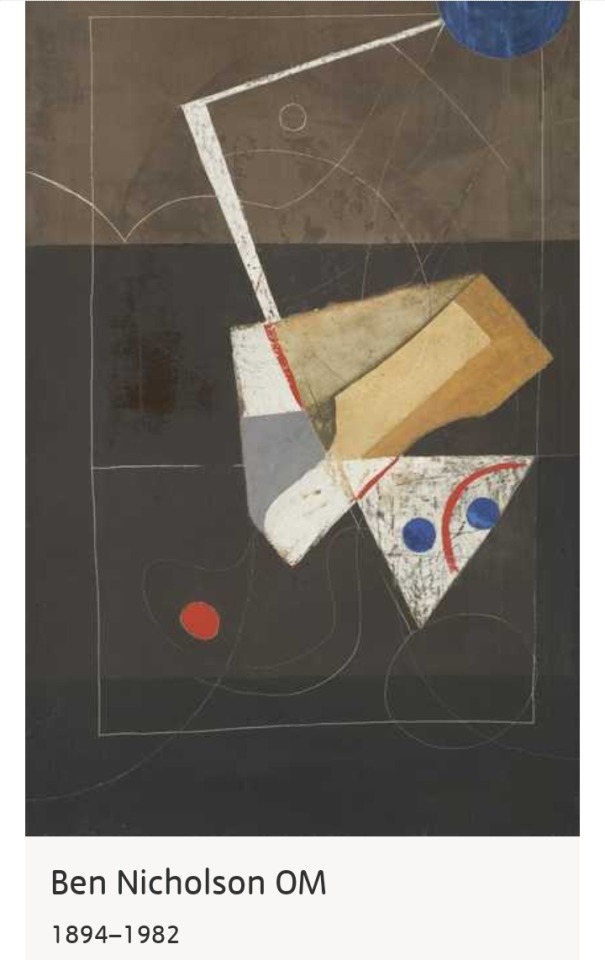
AVAILABLE ONLINE **NOT MY WORK***
Born in Denham, Buckinghamshire, and was the son of the artists William Nicholson and Mabel Pryde. He studied at the Slade School of Art, 1910-11. He spent 1912 to 1914 in France and Italy, and was in the United States in 1917-18. He married the artist Winifred Roberts in 1920. Over the next three years they spent winters in Lugano, Switzerland, then divided their time between London and Cumberland. In 1931, Nicholson's relationship with the sculptor Barbara Hepworth resulted in the breakdown of his marriage to Winifred. He and Hepworth married in 1938 and divorced in 1951. Nicholson lived in London from 1932 to 1939, making several trips to Paris in 1932-3, visiting the studios of Picasso, Braque, Arp, Brancusi and Mondrian. From 1939 to 1958 he lived and worked in Cornwall, before moving to Switzerland. He returned to London in 1974.
Nicholson's earliest paintings were still lifes influenced by those of his father. In the 1920s he began painting figurative and abstract works inspired by Post Impressionism and Cubism. He produced his first geometric and abstract reliefs in 1933. He first exhibited in 1919, at the Grosvenor Gallery and Grafton Galleries. His first one-man show was held at the Twenty-one Gallery, London in 1924. From 1924 to 1935 he was a member of the Seven and Five Society, and in 1933 he joined Unit One, founded by Paul Nash. In 1937 Nicholson, Naum Gabo and the architect Leslie Martin edited Circle: International Survey of Constructive Art. Circle identified Nicholson with a group of like-minded artists and architects who wanted to apply 'constructivist' principles to public and private art, advocating mathematical precision, clean lines and an absence of ornament.
In 1952 Nicholson won first prize at the Carnegie International, Pittsburgh. He was awarded the first Guggenheim International painting prize in 1956, and the international prize for painting at the Sao Paulo Bienal in 1957. He received the Order of Merit in 1968. Numerous retrospective exhibitions of his work have been held, including shows at the Venice Biennale and Tate Gallery in 1954-5, Kunsthalle, Berne in 1961, Museum of Fine Arts, Dallas in 1964, Albright-Knox Art Gallery, Buffalo in 1978, and Tate Gallery in 1993-4. Helped by wide international exposure in British Council tours during the 1940s and 1950s and by the championing of the writer Herbert Read, Nicholson's work came to be seen, with Henry Moore's, as the quintessence of British modernism.
Further reading:
Jeremy Lewison, Ben Nicholson, Oxford 1991
Jeremy Lewison, Ben Nicholson, exhibition catalogue, Tate Gallery 1993
1 note
·
View note
Text
The mummy movies

THE MUMMY MOVIES MOVIE
These films focus on the mummy named Kharis. These were later followed up in the spoof Abbott and Costello Meet the Mummy (1955). Unlike Frankenstein and Dracula, and other Universal horror films, this film had no official sequels, but rather was semi-remade in The Mummy's Hand (1940) and its sequels: The Mummy's Tomb (1942), The Mummy's Ghost (1944), and The Mummy's Curse (1944). The sequence was cut from the film by Karl Freund due to time. The Saxon Warrior was originally part of a long flashback sequence showing all of Helen’s past lives from ancient Egypt to the present. Henry Victor is listed in the credits but never appears in the film. Zita Johann as Helen Grosvenor/Princess Ankh-es-en-Amon.Boris Karloff as Ardath Bey/Imhotep (billed as Karloff).Muller, Frank calls Helen back to the world of the living while the Scroll of Thoth continues to burn. This breaks the spell that had given Imhotep his immortality, causing him to age rapidly and then crumble to dust. The statue of Isis raises its arm and emits a beam of light that sets the Scroll of Thoth on fire. She is saved when she remembers her past life and prays to the goddess Isis to save her. Believing her to be Ankh-es-en-amon's reincarnation, he attempts to kill her, with the intention of mummifying her, resurrecting her, and making her his bride. Imhotep encounters Helen Grosvenor (Zita Johann), a woman bearing a striking resemblance to the Princess. The archaeologists find the tomb, give the mummy and the treasures to the Cairo Museum, and thank Ardath Bey for the information. He shows them where to dig to find Ankh-es-en-amon's tomb. He calls upon Sir Joseph's son Frank (David Manners) and Prof. Imhotep escapes from the archaeologists, taking the Scroll of Thoth, and prowls Cairo seeking the modern reincarnation of Ankh-es-en-amon.ġ0 years later, Imhotep is masquerading as a modern Egyptian named Ardath Bey. Despite Muller's warning, Sir Joseph's assistant Ralph Norton (Bramwell Fletcher) reads aloud an ancient life-giving scroll – the Scroll of Thoth. The usual scar made by the embalmers knife is not there." Sir Joseph Wimple responds, "I guessed as much." Muller then deduces that Imhotep was buried alive for sacrilege. Muller (Edward Van Sloan) inspects the mummy and exclaims "The viscera were not removed. Imhotep had been mummified alive for attempting to resurrect his forbidden lover, the princess Ankh-es-en-amon. 3.4 Reboot and shared cinematic universeĪn ancient Egyptian priest called Imhotep (Boris Karloff) is revived when an archaeological expedition in 1921, led by Sir Joseph Whemple (Arthur Byron), finds Imhotep's mummy.More recently, the Dockyard provided the ‘French’ streets for Les Misérables, ‘Pentonville Prison’ for Guy Ritchie’s Sherlock Holmes and the laundry for Suffragette.Īfter the ship goes down in flames, they come ashore at Frensham Ponds, another much-used location, on the A287 about five miles south of Farnham in Surrey. The port of ‘Giza’, where the party boards the Nile ship, is another large set, this time built at Chatham Historic Dockyard, Chatham, about 35 miles southeast of London, in Kent. It’s been empty for many years as various plans to turn it into a hotel have come to nothing, and not open to the public. Built in the 1850s for the Rothschild family, the house is seen also in Terry Gilliam’s Brazil, its exterior in Stanley Kubrick's Eyes Wide Shut, and most famously as ‘Wayne Manor’ in Christopher Nolan's Batman Begins. While the exterior of the ‘Museum of Antiquities in Cairo’ is in Marrakech, its interior is that of Mentmore Towers in the village of Mentmore, Buckinghamshire. The locations are not all quite so exotic, though.
THE MUMMY MOVIES MOVIE
The same place became the villain's desert hideout in Bond movie Spectre. ‘Cairo’ of 1925 is Marrakech, and the lost city of ‘Hamunaptra’ was a vast set built at an old fort inside a dormant volcano crater about 12 miles southwest of Erfoud, in the southeast of the country. It’s set, naturally, in ‘Egypt’, but was filmed mainly in Morocco. The splurgy horror comedy revamp of the classic legend is a little too knee-deep in CGI effects, but went on to be enormously successful, spawning sequels and spin-offs. The Mummy location: the interior of the ‘Museum of Antiquities in Cairo’: Mentmore Towers, Mentmore, Buckinghamshire | Photograph: wikimedia / Swanker

0 notes